These Photos Can Help You Figure Out What's Causing That Rash On Your Tush

Let's be real: Any kind of skin irritation is not fun. A rash is uncomfortable at best, and even more so if it’s in your nether regions, such as a butt rash.
Turns out, butt rashes could be related to a number of issues—most of which are no biggie and easily treatable. (Cue the sigh of relief.)
Potential causes for a rash on your butt include autoimmune conditions, allergic reactions, and infections, says Dustin Portela, DO, a board-certified dermatologist at Treasure Valley Dermatology and Skin Cancer Center in Boise, Idaho. To make the situation even more complicated, different skin conditions look different on light skin compared to darker skin colors. And pictures of rashes in medical textbooks often feature white models.
"When the images in the textbooks and images in the lectures are not diverse and are not really reflective of society and what you will see in the real world, then that bias is ingrained in medical education," says Caroline Robinson, MD, the founder and CEO of Tone Dermatology in Chicago. "The result of that is either under-diagnosis, misdiagnosis, or taking a long time to diagnose for our patients of color. I know that there are so many efforts ongoing to address that, but unfortunately, we are not there."
Below are some of the most common rashes and how they may appear depending on your skin tone, so you know exactly what to look for, plus treatments that can ease your symptoms.
Meet the experts: Dustin Portela, DO, is a board-certified dermatologist at Treasure Valley Dermatology and Skin Cancer Center in Boise, Idaho. Caroline Robinson, MD, is the founder and CEO of Tone Dermatology in Chicago. Ariel Ostad, MD, is a dermatologist and cosmetic surgeon in New York City. Adam Friedman, MD, is a professor of dermatology at GW School of Medicine and Health Sciences. Joshua Zeichner, MD, is the director of cosmetic and clinical research in dermatology at Mount Sinai Hospital. Sumayah Jamal, MD, is the director of the Skin of Color Specialty Clinic at Schweiger Dermatology Group in New York City.
How common are butt rashes?
Some types of butt rashes are more common than others: "Extremely common rashes are due to exercise [and] sweating while wearing tight clothing as well as sitting in them for long periods of time," says Ariel Ostad, MD, a dermatologist and cosmetic surgeon in New York City. (Yet another good reason to change out of those leggins asap!). Eczema from dry skin is also common, he notes. However, luckily, rashes from herpes, fungal infection, psoriasis, and lichen sclerosus are super uncommon, per Dr. Ostad.
What causes butt rashes?
If the rash is: wrinkled and smudgy
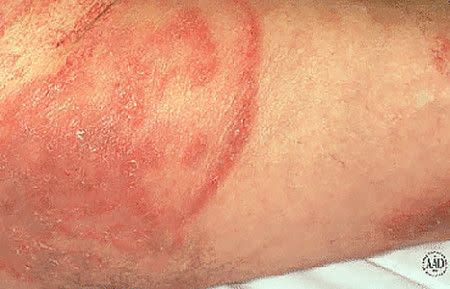
It may be: cutaneous t-cell lymphoma
“A lot of people miss this diagnosis. I see it all the time. They call it eczema, they call it dry skin, and it's not,” says Adam Friedman, MD, a professor of dermatology at GW School of Medicine and Health Sciences. Cutaneous t-cell lymphoma (CTL) is actually a type of skin cancer, relating to abnormal immune cells called lymphocytes. And this condition has a predilection for areas that are covered.
CTL typically looks like a wrinkled, smudgy rash, and while the image above shows red-colored irritation, Dr. Robinson says that on darker skin it can present hypopigmented (lighter than the surrounding skin) or hyperpigmented (darker than the surrounding skin).
While this cancer isn't super common, when left untreated, Dr. Friedman says it can turn into a more serious health situation.
If the rash is: itchy, shiny, and near the anus
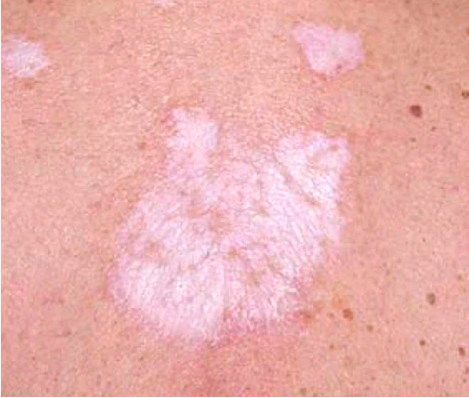
It may be: lichen sclerosis
This one involves the perianal area. It's thought to be an autoimmune disease where the immune system is attacking the skin, thinning its top layer and thickening the bottom part where your hair follicles and sweat glands are, according to Dr. Friedman.
"This condition is exquisitely itchy," he says. It's usually treated aggressively with steroids. And if left untreated, the disease can easily turn into squamous cell carcinoma, another type of skin cancer.
What you want to look out for is a kind of shiny, lighter-colored rash in the anal area. When active, Dr. Friedman says, the edges of the rash will sometimes turn purple.
A biopsy is needed to diagnose this disease, so if you're starting to see a similar rash appear, give your doc a call ASAP.
If the rash is: red or hyperpigmented dry bumps
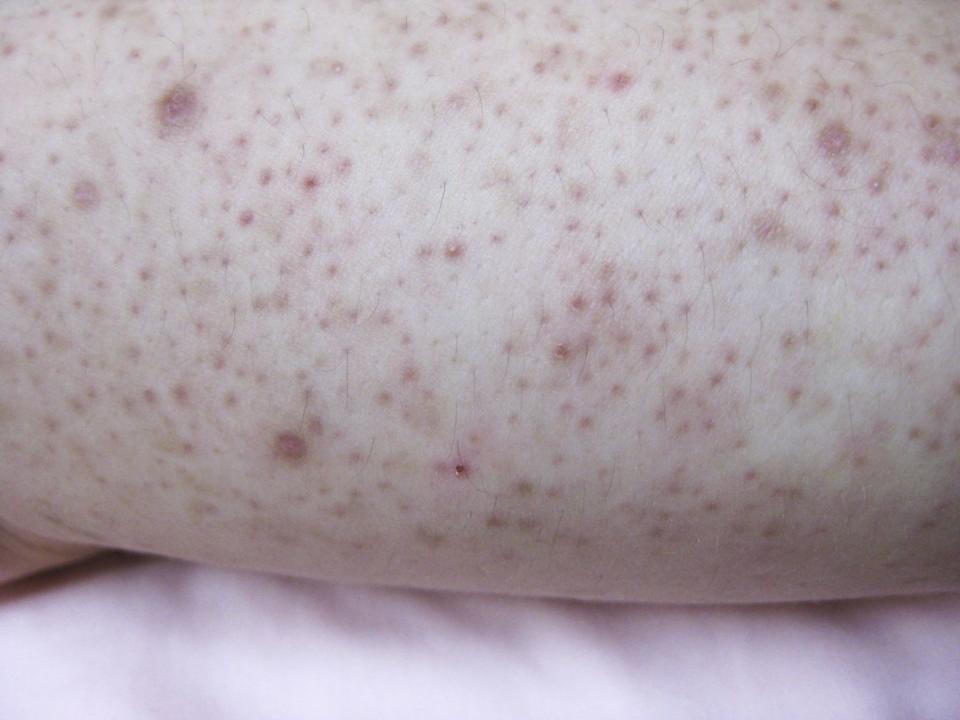
It may be: keratosis pilaris
Do the bumps back there feel like sandpaper? If so, you might have keratosis pilaris, which occurs when excess keratin plugs up the opening to the hair follicle. This keratin plug sticks up above the surface just enough to create a small bump you can feel.
People often experience keratosis pilaris on the back of their arm and thighs, but it can occur on the butt as well. While the bumps may turn from flesh-colored to red from inflammation on light skin, they often turn hyperpigmented on dark skin.
If you think you're suffering from keratosis, head to your closest drug store. You're going to want to buy something known as a keratolytic, which is basically a kind of therapy that treats excess skin. Just make sure yours contains ingredients like urea and ammonia lactate.
If the rash is: a cluster of painful or burning bumps and blisters
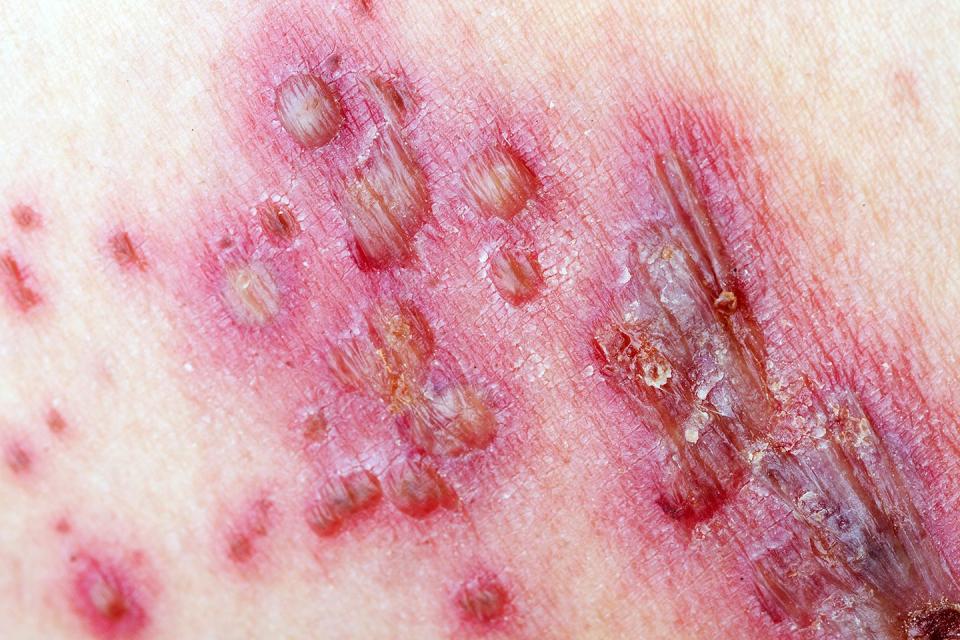
It may be: a herpes outbreak
Herpes is typically thought of as something that can only affect your mouth and genitals, but it can crop up on your butt too, says Joshua Zeichner, MD, the director of cosmetic and clinical research in dermatology at Mount Sinai Hospital. It can even find its way to your lower back, adds Dr. Robinson.
When the virus flares up—due to stress or illnesses that weaken your immune system—it can come to the surface of the skin, causing a rash, explains Dr. Zeichner. The rash will probably go away on its own in about a week, but it’s contagious through direct contact, so it's best to avoid getting too intimate. You can also try an OTC cold-sore medication or see your dermatologist for a prescription antiviral to clear up the outbreak faster, says Dr. Zeichner.
If the rash is: a red or hyperpigmented circle with a lighter scaly ring around it
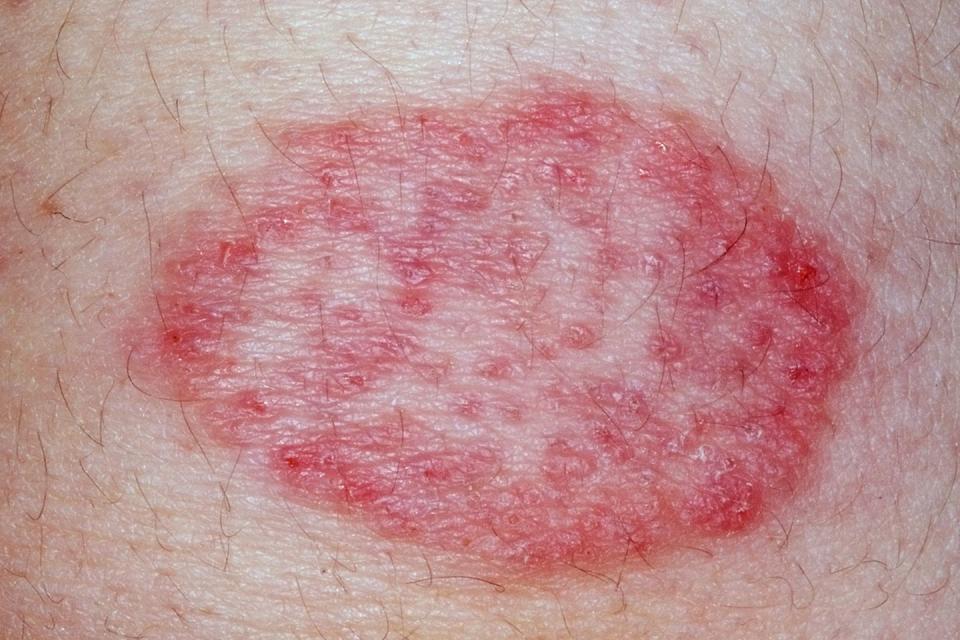
It may be: a fungal infection
If you’ve ever picked up athlete’s foot (a.k.a. ringworm or tinea corporis) from your gym’s locker room, you’ve seen this fungus before—and, yeah, it can show up on your butt, too.
It thrives in hot, humid environments, so working out in the summer (or sitting around in sweaty workout clothes or steam rooms) increases your risk, says Dr. Zeichner. He recommends treating the rash ASAP with an athlete’s foot cream, so it doesn’t spread; apply it twice a day for one to two weeks and see your doctor if it doesn’t go away.
If the rash is: unbearably itchy and around the anus
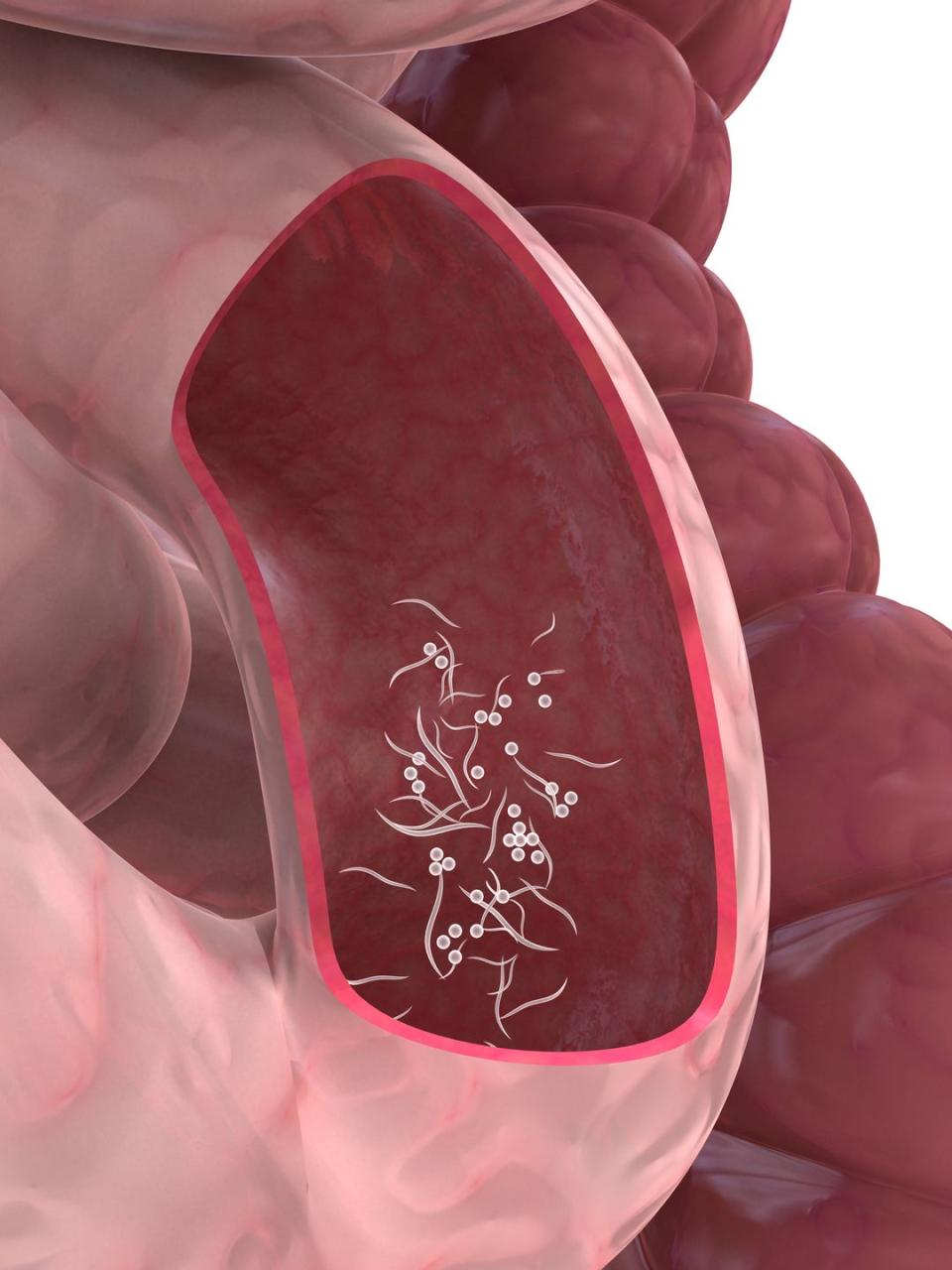
It may be: pinworm
This is a kind of rash that would take place in your gluteal crack or perianal area. But it actually stems from an intestinal worm infection. “The worm comes out of the anus and implants eggs into skin folds," Dr. Friedman says—and this causes severe itch.
In order to find out if you have a pinworm, a dermatologist would take tape, put it on your perianal area, and pull it off. What's left on the tape will be examined using a microscope—and that's where they'll be able to see the pinworms and treat you with an anti-parasite medication.
If the rash is: red or hyperpigmented with tender, pimple-like bumps
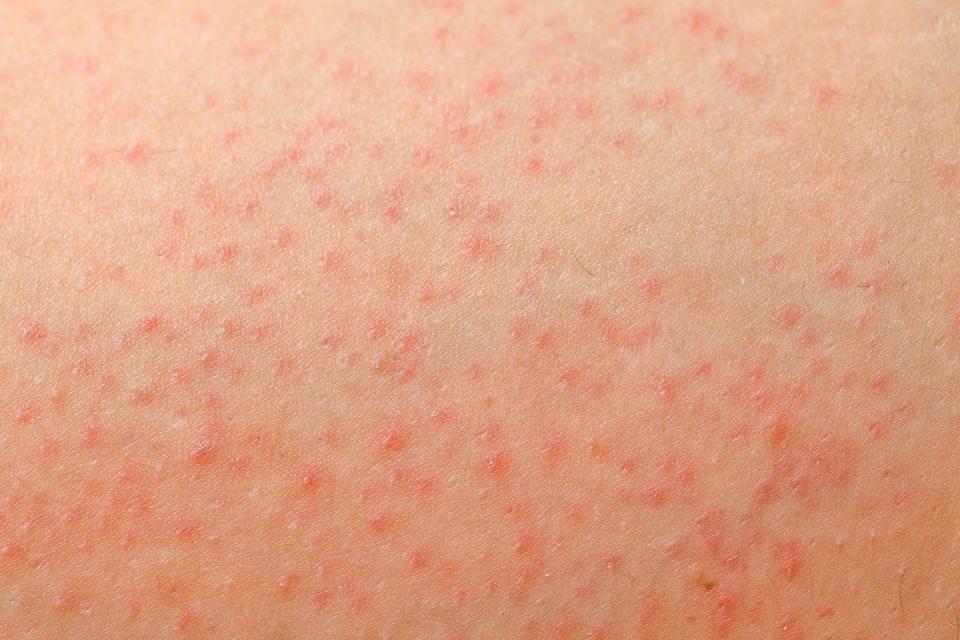
It may be: folliculitis
Most people call this “butt acne,” but that's not entirely accurate, says Dr. Zeichner. Those pimple-like bumps are actually superficial infections of the hair follicles—otherwise known as folliculitis.
Mild cases may be helped by washing with an antibacterial soap. For recurring cases, Dr. Zeichner recommends washing with a surgical-grade cleanser like Hibiclens or an acne-treatment wash with benzoyl peroxide. To prevent future outbreaks, keep the skin clean and dry (especially after workouts) and wear breathable fabrics.
If the rash is: itchy with potentially pus-filled bumps
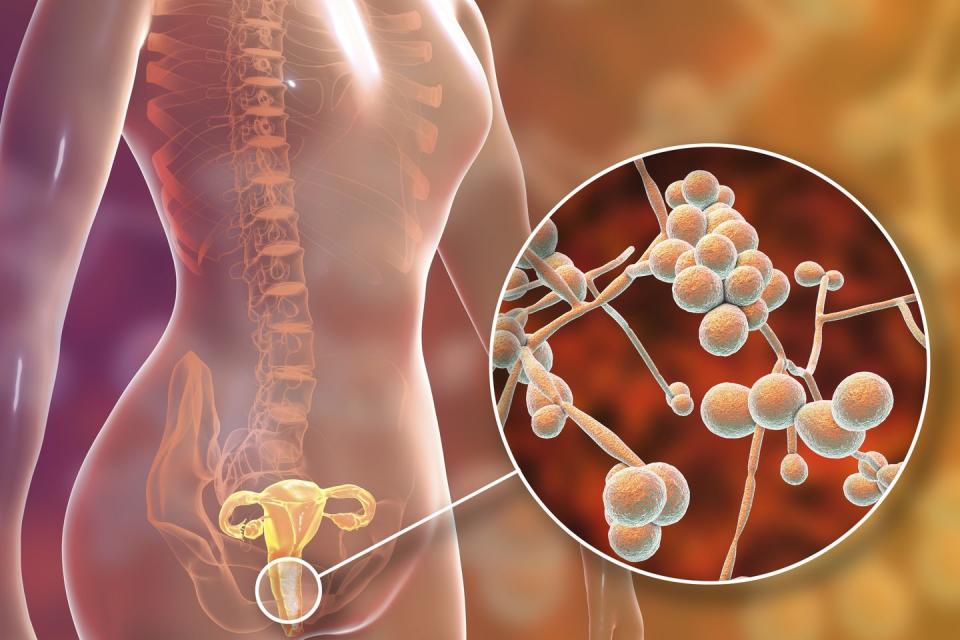
It may be: a yeast infection
Most people consider yeast infections strictly vaginal. But they can also affect skin folds on the body (like the butt!).
What people don't understand is that yeast is not the problem itself. "We have yeast everywhere, as it's part of our microbiome," Dr. Friedman says. What's actually happening is that people are experiencing intertrigo or irritant dermatitis, inflammation of the skin in skin folds caused by poor hygiene and friction. Yeast (which is a fungus) may overgrow in the inflamed area, leading to infection.
Watch for itchiness on your butt, closer to your perianal area. You might see satellite pustules, or small pus-filled bumps situated slightly away from the main rash area.
As far as treatment goes, OTC ointments or creams for yeast infections should do the trick.
If the rash is: plaques covered in scales and located inside your butt crack
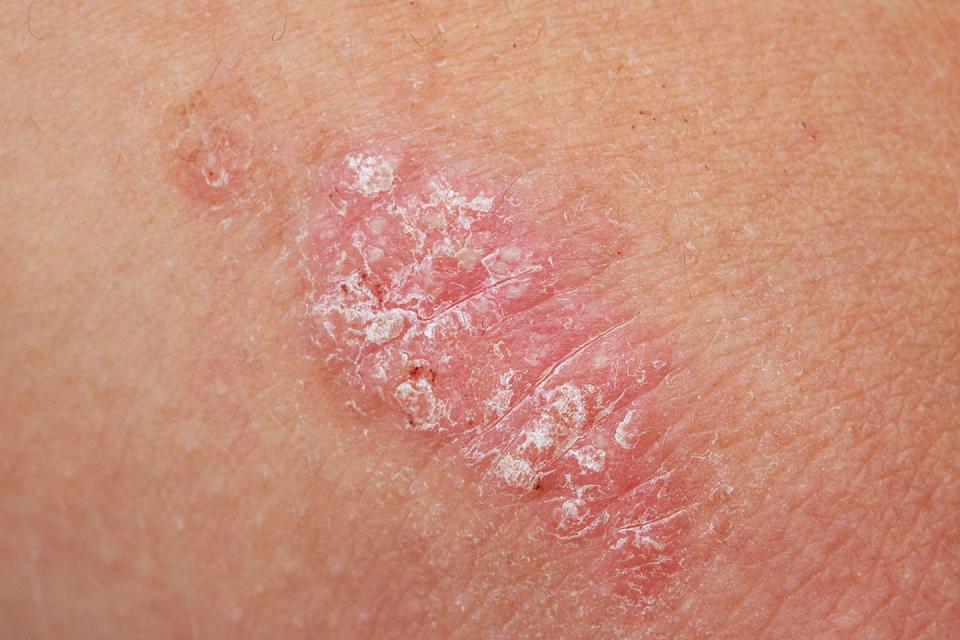
It may be: psoriasis
In this chronic (and often genetic) condition, your body’s immune system “gets angry and attacks the skin,” says Dr. Zeichner. Psoriasis usually shows up on elbows and knees, but in between the butt cheeks is a common spot too.
"In the textbooks, it is described as this 'salmon pink color,' and this is one of the reasons why psoriasis is under-diagnosed in patients of color—I imagine because everyone is looking for that salmon and it's not there," says Dr. Robinson. "On patients of color, it can often look slightly violet. Less often, it's hyperpigmented or hypopigmented."
You can treat psoriasis with a one percent hydrocortisone cream, but prolonged use can damage your skin. If it’s not going away, check in with your doctor for a prescription-strength anti-inflammatory cream.
If the rash is: patchy and itchy, sometimes with tiny bumps
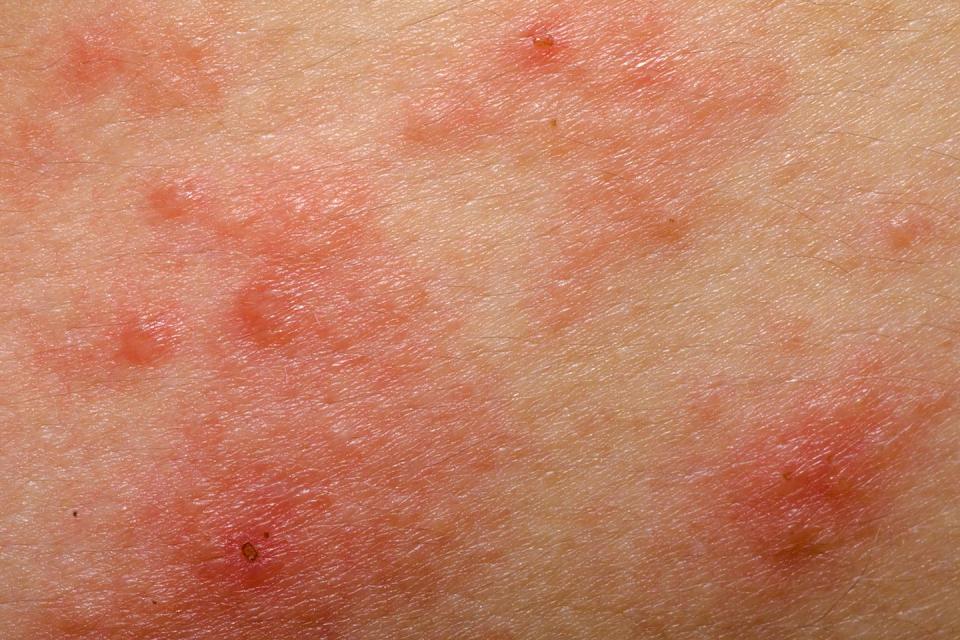
It may be: eczema
Eczema is an inflammatory skin condition that causes skin to dry out and crack—often caused by genetics, irritants, or allergies. These microscopic cracks develop in the outer layer of skin, so the key to treatment is hydrating and repairing the skin barrier with moisturizers and anti-inflammatory creams, according to Dr. Zeichner.
Eczema on your butt may be caused by irritating fabrics, detergents, toilet paper, or cleansing wipes, so be mindful of what’s coming into contact with your skin back there.
The severity of eczema is typically under-diagnosed in people of color because, again, redness isn't a common symptom in dark skin, yet docs have been trained to monitor the level of redness to make treatment recommendations.
If the rash is: super itchy and on your anus
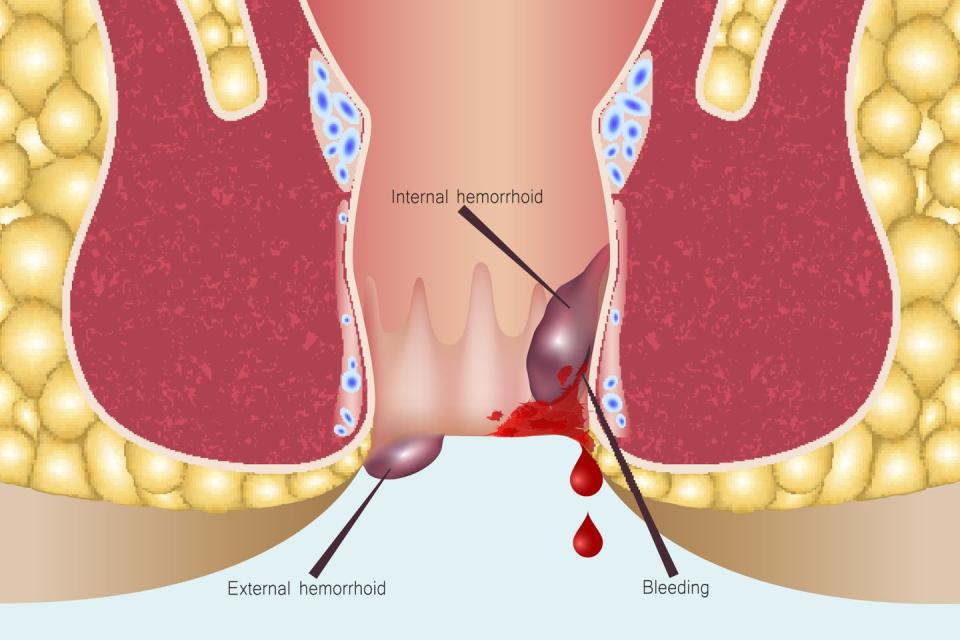
It may be: hemorrhoids
Straining during bowel movements (thanks, chronic constipation or pregnancy) causes hemorrhoids, which are swollen and dilated blood vessels around your anus. These protrusions are itchy and painful.
They’re pretty common and can be treated with OTC hemorrhoid ointments, but Dr. Zeichner recommends getting medical attention (or a GI evaluation) if they’re causing you to bleed during bowel movements—that's something you never want to ignore.
If the rash is: itchy with acne-like bumps
It may be: miliaria (a.k.a. heat rash)
Heat rash occurs when sweat-duct openings become blocked, which can happen when wearing tight-fitting clothing that traps sweat and bacteria. The resulting bumps are typically flesh-colored on darker skin and red on lighter skin, says Dr. Robinson.
"That trapping results in an inflammatory response," Dr. Friedman says. Luckily, heat rashes are easily treatable with a little OTC medication. Dr. Friedman recommends antibacterial washes or acne washes that contain benzoyl peroxide or salicylic acid. Pro tip: benzoyl peroxide can stain, so be careful when applying.
If the rash is: swollen and sometimes watery
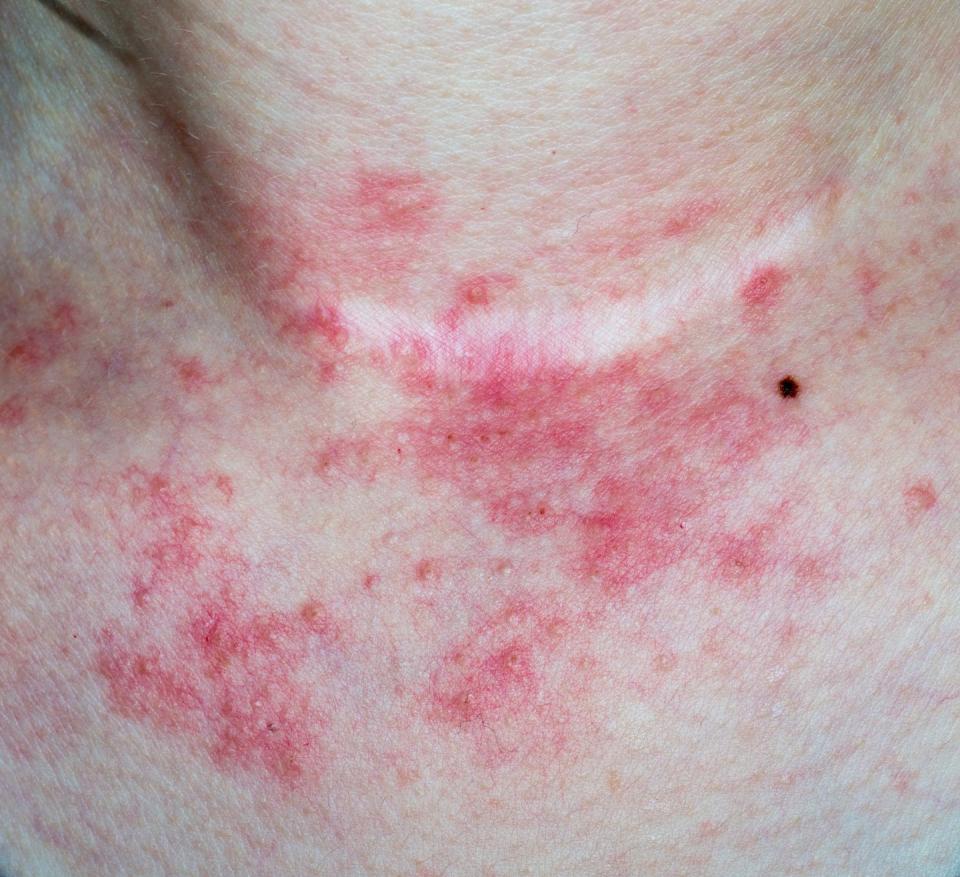
It may be: an allergic reaction
Unlike a heat rash (which is often caused by irritation), other rashes are sparked by allergic reactions, like contact dermatitis. This itchy rash is caused by direct contact with a substance that you're allergic to. The body has an immune response that can cause discomfort and intense itching, explains Sumayah Jamal, MD, the director of the Skin of Color Specialty Clinic at Schweiger Dermatology Group in New York City.
Irritant rashes are often itchy and they hurt like crazy, Dr. Friedman says. The bumps will appear raised and tend to be a darker pink to red color on light skin and hyperpigmented on dark skin. Rashes caused by an allergic reaction are often more swollen, pink in light skin or hyperpigmented in dark skin, and maybe even watery.
The first step is to identify what's causing your reaction. If you can avoid it, contact dermatitis usually clears up in two to four weeks on its own. While you're waiting for it to go away, you can try using an anti-itch cream and a cool compress. Dr. Jamal also recommends antihistamines, oral steroids, or topical steroids.
Head to your doctor's office if you're unsure of what you're dealing with so they can provide the proper treatment or medication.
When should I see a doctor?
If you have pain or a fever, you should see your doctor right away. Same goes for if your rash isn’t going away after several weeks or is getting worse—head to your doctor's office. This is key if you're unsure of what you're dealing with, as they can provide the proper diagnosis, as well as prescription-level treatment or medication if necessary.
Are there any home remedies I can try?
If you are not experiencing severe symptoms from a butt rash, you can consider some potential home remedies.
Gently cleanse the area. Dr. Portela recommends cleansing your body with a gentle body wash.
Moisturize. After cleaning, use an emollient moisturizing cream, such as those by CeraVe, Cetaphil, or Vanicream, immediately afterward to help repair the skin barrier, Dr. Portela suggests.
Try an anti-itch cream. “If you are experiencing itching, you can use a generic over-the-counter hydrocortisone cream for up to two weeks,” says Dr. Portela. “When the skin is ulcerated or [damaged], I recommend using a 40% zinc paste such as Desitin Max Strength, just as you would use on a baby’s bottom, as it is very helpful to improve a compromised skin barrier.”
Use less soap. In addition to regularly moisturizing, reducing the use of soap can help to restore the moisture in the skin, per Dr Ostad.
How can I prevent a butt rash in the first place?
While it depends on the root cause, prevention of butt rashes sometimes comes down to some solid self-care measures, some of which are similar to what you'd do to treat a butt rash.
Cleanse and moisturize. One of the best things you can do to prevent butt rashes is to cleanse and moisturize on the reg. “Take good care of your skin by cleansing [and moisturizing] daily,” Dr. Portela says.
Change out of sweaty clothes. Dr. Portela reiterates the importance of changing out of sweaty clothes and showering immediately after exercising or playing sports.
Use protection. Lastly, if you are sexually active, Dr. Portela recommends using a barrier method of contraception like condoms, which can prevent you from contracting an STI.
You Might Also Like

